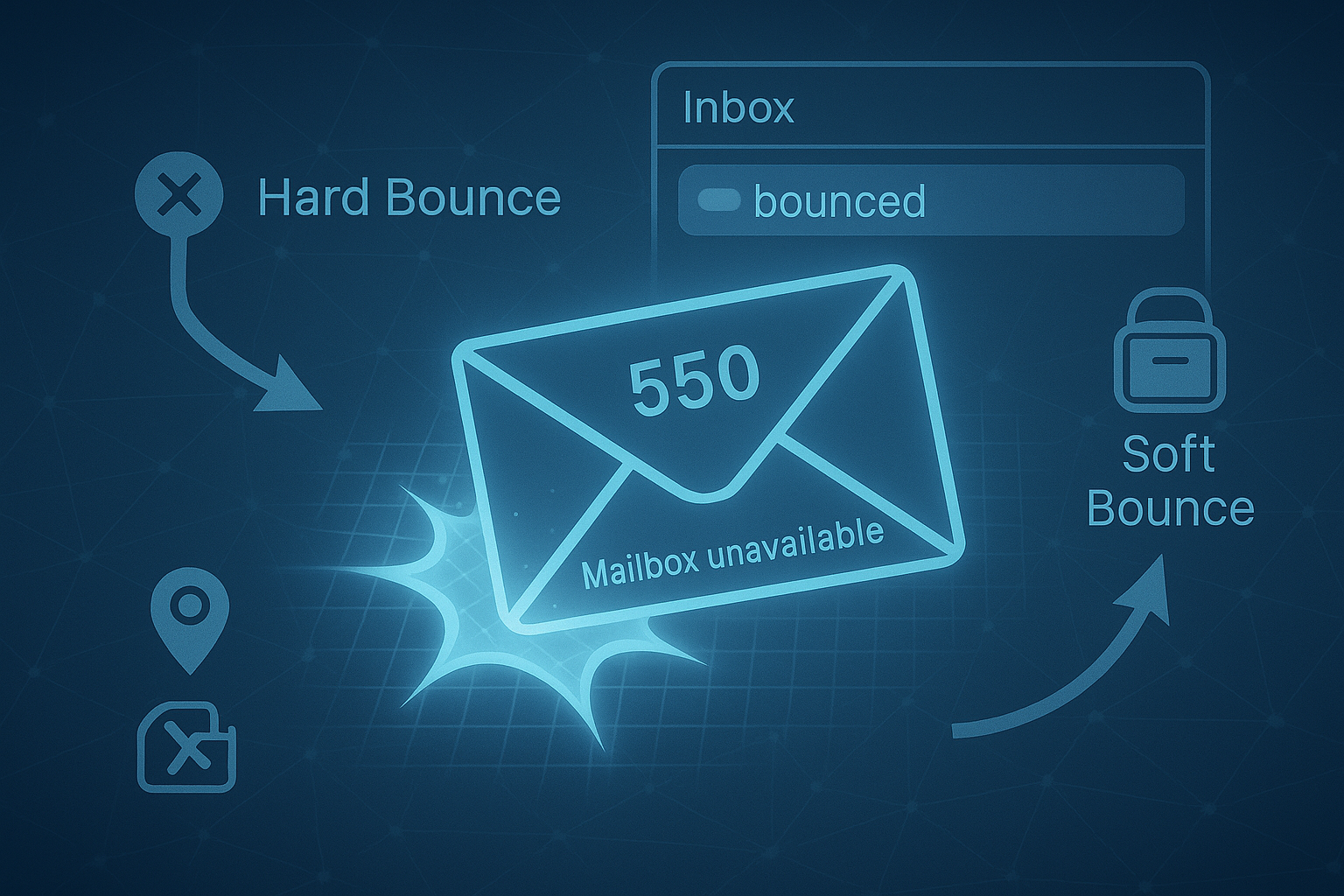
When you send an email and it doesn’t reach its recipient, you might get a message saying your email “bounced.” But what does that actually mean? In this article, I’ll explain what an email bounce is, why it happens, and how you can fix or prevent it. If you want to go deeper, consider a Complete Email Deliverability Audit for your business.
What Is an Email Bounce?
An email bounce happens when your message can’t be delivered to the recipient and is returned to you with an error message. This bounce-back usually includes a code and a short explanation of why the delivery failed. In plain terms, your email hit a roadblock and couldn’t get through.
Learn more
Types of Email Bounces
Not all bounces are the same. Understanding the difference helps you know what action to take.
- Hard Bounce: This is a permanent failure. The most common reasons are an invalid email address (like a typo or a deleted account), a non-existent domain, or a blocked sender. Hard bounces mean you should remove the address from your list right away.
See more examples - Soft Bounce: This is a temporary problem. Maybe the recipient’s mailbox is full, their server is down, or your message is too large. Sometimes, the server will try again later. If the problem keeps happening, you may need to follow up or eventually remove the address.
Read more
Some email services also report pending bounces (temporary technical issues) and global bounces (permanent failures across multiple senders).
HubSpot’s explanation
Common Causes of Email Bounces
- Non-existent Address: Typos, deleted accounts, or fake emails. Always double-check addresses and use email validation tools.
- Mailbox Full: The recipient can’t receive new messages until they clear space. This often signals an abandoned account.
- Temporary Server Issues: The recipient’s server is down or overloaded. These usually resolve on their own.
- Blocked Sender or IP: Your sending server or domain is on a blocklist, or your reputation is poor.
- Bad DNS or Authentication: Missing or incorrect SPF, DKIM, or DMARC records can cause bounces.
- Spam Content: If your email looks suspicious, spam filters may reject it.
- Attachment or Message Size: Too-large attachments or messages can trigger bounces.
For more technical details, see MailReach’s guide.
How to Troubleshoot and Reduce Email Bounces
- Validate email addresses when you collect them. Use double opt-in and email verification tools.
- Keep your list clean. Remove addresses that hard bounce. Monitor soft bounces and remove if they persist.
- Check your sender reputation. Use tools to monitor if your domain or IP is on any blocklists.
- Set up SPF, DKIM, and DMARC. Make sure your DNS records are correct to prove your emails are legitimate.
- Watch your content. Avoid spammy words and suspicious links. Keep attachments small.
- Don’t buy or rent email lists. These lists are often full of invalid or abandoned addresses.
- Give users control. Let subscribers choose how often they hear from you.
For a step-by-step approach, see Mailgun’s bounce management tips.
Email Bounce Codes: What Do They Mean?
Bounce messages often include codes that help you understand the problem. Codes starting with 5 mean a permanent error (hard bounce), while those starting with 4 mean a temporary error (soft bounce). For example:
550– Mailbox unavailable (hard bounce)552– Storage allocation exceeded (soft bounce)554– Transaction failed (could be hard or soft)
For a more detailed list, see Mailtrap’s bounce code guide.
Why Bounces Matter
A high bounce rate hurts your sender reputation. Over time, this means more of your emails will go to spam or get blocked entirely. Keeping your bounce rate low is key to good deliverability.
If you run into persistent issues, a Complete Email Deliverability Audit can help you find and fix the root causes.